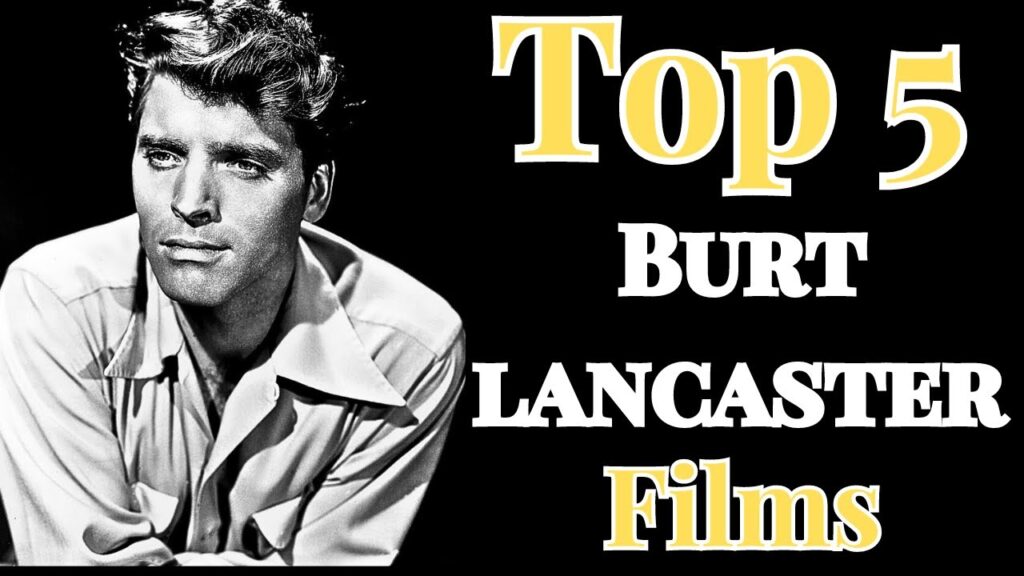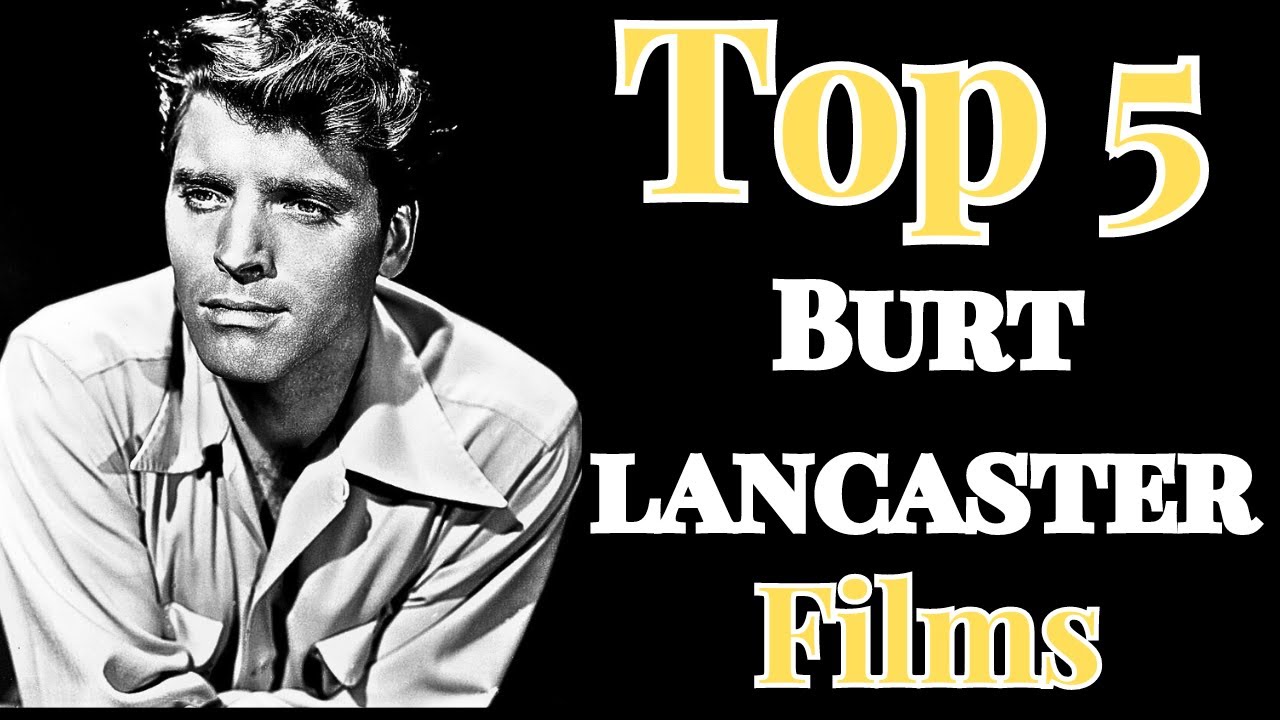
Burt Lancaster Films: A Deep Dive into a Hollywood Legend’s Work
Burt Lancaster. The name conjures images of a charismatic, athletic figure gracing the silver screen with a captivating blend of strength and sensitivity. But beyond the captivating smile and undeniable physique lay a remarkably versatile actor who starred in some of the most iconic and enduring films in cinematic history. This article offers a comprehensive exploration of Burt Lancaster’s filmography, delving into his most memorable roles, the themes that permeated his work, and the lasting impact he had on the world of cinema. We aim to provide an unparalleled resource for film enthusiasts, students, and anyone seeking a deeper understanding of this Hollywood legend’s contributions.
The Enduring Appeal of Burt Lancaster’s Film Career
Burt Lancaster’s career spanned several decades, from the late 1940s to the early 1990s. He navigated a diverse range of genres, showcasing his talent in action-adventure epics, gritty dramas, and even comedies. What set him apart was his ability to embody characters with both physical prowess and emotional depth. Whether he was swashbuckling as Dardo Bartoli in “The Flame and the Arrow” or portraying the tormented Sergeant Milton Warden in “From Here to Eternity,” Lancaster brought an authenticity and intensity to his performances that resonated with audiences worldwide. Recent film scholarship emphasizes Lancaster’s commitment to projects with social commentary, further cementing his legacy as more than just a matinee idol.
From Circus Acrobat to Hollywood Star: Lancaster’s Early Life
Born Burton Stephen Lancaster in New York City in 1913, his early life was far removed from the glitz and glamour of Hollywood. He excelled in gymnastics and acrobatics, skills he would later incorporate into his film roles. Forming a successful acrobatic duo with Nick Cravat, Lancaster toured the vaudeville circuit. His experiences during World War II further shaped his worldview. It wasn’t until his late 20s that he ventured into acting, landing a role on Broadway and quickly catching the attention of Hollywood scouts.
Key Elements of Lancaster’s Acting Style
Lancaster’s approach to acting was characterized by several key elements:
- Physicality: His athletic background gave him a unique advantage, allowing him to perform many of his own stunts and bring a dynamic energy to his roles.
- Intensity: Lancaster fully committed to his characters, immersing himself in their emotions and motivations.
- Versatility: He effortlessly transitioned between genres, proving his ability to handle both dramatic and comedic roles.
- Intelligence: Lancaster was known for his sharp intellect and his thoughtful approach to his craft.
Defining Burt Lancaster Films: A Genre-Spanning Overview
While often associated with action and adventure, Burt Lancaster’s filmography defies easy categorization. He starred in a wide array of genres, including:
- Action-Adventure: “The Flame and the Arrow,” “The Crimson Pirate,” “Apache”
- War Dramas: “From Here to Eternity,” “Run Silent, Run Deep,” “Judgment at Nuremberg”
- Film Noir: “The Killers,” “Criss Cross,” “Sweet Smell of Success”
- Westerns: “Vera Cruz,” “Lawman,” “Ulzana’s Raid”
- Historical Epics: “The Leopard,” “1900,” “Conversation Piece”
- Dramas: “Come Back, Little Sheba,” “Birdman of Alcatraz,” “Atlantic City”
This diversity underscores Lancaster’s willingness to take risks and challenge himself as an actor. He wasn’t content to be typecast, constantly seeking out roles that pushed his boundaries and explored different facets of the human experience.
Spotlight on a Classic: ‘From Here to Eternity’ (1953)
“From Here to Eternity” stands as one of Lancaster’s most critically acclaimed and commercially successful films. Set in Hawaii on the eve of the Pearl Harbor attack, the film explores themes of duty, love, and betrayal within the ranks of the U.S. Army. Lancaster’s portrayal of Sergeant Milton Warden, a stoic and principled soldier, earned him widespread praise and solidified his status as a leading man. The film itself won eight Academy Awards, including Best Picture.
The Significance of Sergeant Warden
Sergeant Warden is a complex and compelling character. He’s a career soldier who is deeply loyal to his men but also disillusioned with the military bureaucracy. His affair with Karen Holmes (Deborah Kerr), the neglected wife of his commanding officer, adds another layer of complexity to his character. Lancaster’s performance captures Warden’s inner turmoil and his unwavering commitment to his own moral code.
‘Sweet Smell of Success’ (1957): A Dark Masterpiece
In stark contrast to his heroic roles, Lancaster delivered a chilling performance as J.J. Hunsecker, a powerful and manipulative newspaper columnist, in “Sweet Smell of Success.” This film noir explores the dark underbelly of fame and the corrupting influence of power. Hunsecker uses his considerable influence to destroy the career and personal life of a jazz musician who is dating his sister. Lancaster’s portrayal of Hunsecker is both captivating and disturbing, showcasing his ability to play morally ambiguous characters.
Hunsecker’s Ruthless Ambition
J.J. Hunsecker is a man driven by ambition and a desire for control. He sees himself as the arbiter of taste and morality, and he uses his power to enforce his own narrow worldview. Lancaster’s performance captures Hunsecker’s coldness and his complete lack of empathy for those he deems unworthy.
Beyond Acting: Lancaster’s Independent Production Company
Burt Lancaster wasn’t content to simply be an actor; he was also a shrewd businessman and a champion of independent filmmaking. In the 1950s, he co-founded Hecht-Hill-Lancaster Productions, which produced a string of successful and critically acclaimed films, including “Marty” (1955), “Trapeze” (1956), and “Separate Tables” (1958). This gave Lancaster greater control over his career and allowed him to pursue projects that aligned with his artistic vision. Leading film historians consider this a pivotal moment where actors took production control away from studios.
Empowering Artistic Vision
By forming his own production company, Lancaster challenged the traditional Hollywood studio system and paved the way for other actors to take greater control over their careers. He used his influence to support independent filmmakers and to produce films that explored complex and challenging themes.
The Physicality of Performance: Lancaster’s Athleticism
Lancaster’s background as a circus acrobat was a defining aspect of his screen presence. He brought a unique physicality to his roles, performing many of his own stunts and imbuing his characters with a dynamic energy. This athleticism was particularly evident in films like “The Flame and the Arrow” and “The Crimson Pirate,” where he effortlessly swung from ropes, leaped across rooftops, and engaged in daring sword fights. Even in dramatic roles, his physical presence added a layer of intensity and believability to his performances.
Beyond Stunts: Physicality as Character
Lancaster’s athleticism wasn’t just about performing stunts; it was an integral part of his character development. He used his physical abilities to convey his characters’ strength, agility, and determination. Whether he was fighting for justice or simply trying to survive, Lancaster’s physical presence made his characters all the more compelling.
Exploring Themes in Burt Lancaster’s Films
Lancaster’s films often explored complex and thought-provoking themes, including:
- The Abuse of Power: “Sweet Smell of Success,” “Executive Action”
- Individualism vs. Conformity: “From Here to Eternity,” “The Birdman of Alcatraz”
- Social Justice: “Judgment at Nuremberg,” “Ulzana’s Raid”
- The Human Condition: “Come Back, Little Sheba,” “Atlantic City”
These themes reflect Lancaster’s own intellectual curiosity and his commitment to using his platform to address important social and political issues. He wasn’t afraid to take on controversial roles or to challenge the status quo.
Lancaster’s Impact on the Film Industry
Burt Lancaster’s influence on the film industry is undeniable. He helped to redefine the role of the leading man, proving that actors could be both physically imposing and intellectually stimulating. He also played a key role in the rise of independent filmmaking, empowering actors and directors to take greater control over their creative projects. His legacy continues to inspire actors and filmmakers today.
‘Atlantic City’ (1980): A Late-Career Triumph
In the twilight of his career, Lancaster delivered another memorable performance in “Atlantic City.” He played Lou Pascal, an aging small-time gangster who gets caught up in a drug deal. The film earned Lancaster his fourth Academy Award nomination for Best Actor (he won for “Elmer Gantry”).
A poignant portrayal of aging
Lancaster’s performance in “Atlantic City” is a poignant and nuanced portrayal of aging and regret. He captures Lou’s vulnerability and his longing for a better life. The film itself is a bittersweet ode to a city on the decline, and Lancaster’s performance perfectly embodies the film’s melancholic tone.
Remembering Burt Lancaster: A Lasting Legacy
Burt Lancaster’s contributions to cinema are immense and enduring. He was a versatile actor, a shrewd businessman, and a champion of independent filmmaking. His films continue to be celebrated for their artistic merit, their social commentary, and their sheer entertainment value. By exploring the vast landscape of burt lancaster films, we can gain a deeper appreciation for the talent and vision of this Hollywood legend.
Revisiting the Classics: Rediscovering Lancaster’s Genius
From swashbuckling adventures to gritty dramas, Burt Lancaster’s films offer a diverse and rewarding viewing experience. Whether you’re a longtime fan or a newcomer to his work, there’s always something new to discover in his performances. Take the time to revisit his classics and to explore some of his lesser-known gems. You’ll be rewarded with a deeper understanding of one of the most talented and influential actors in cinematic history. Consider starting with “The Killers” for a taste of noir, or “The Leopard” for a historical epic.

